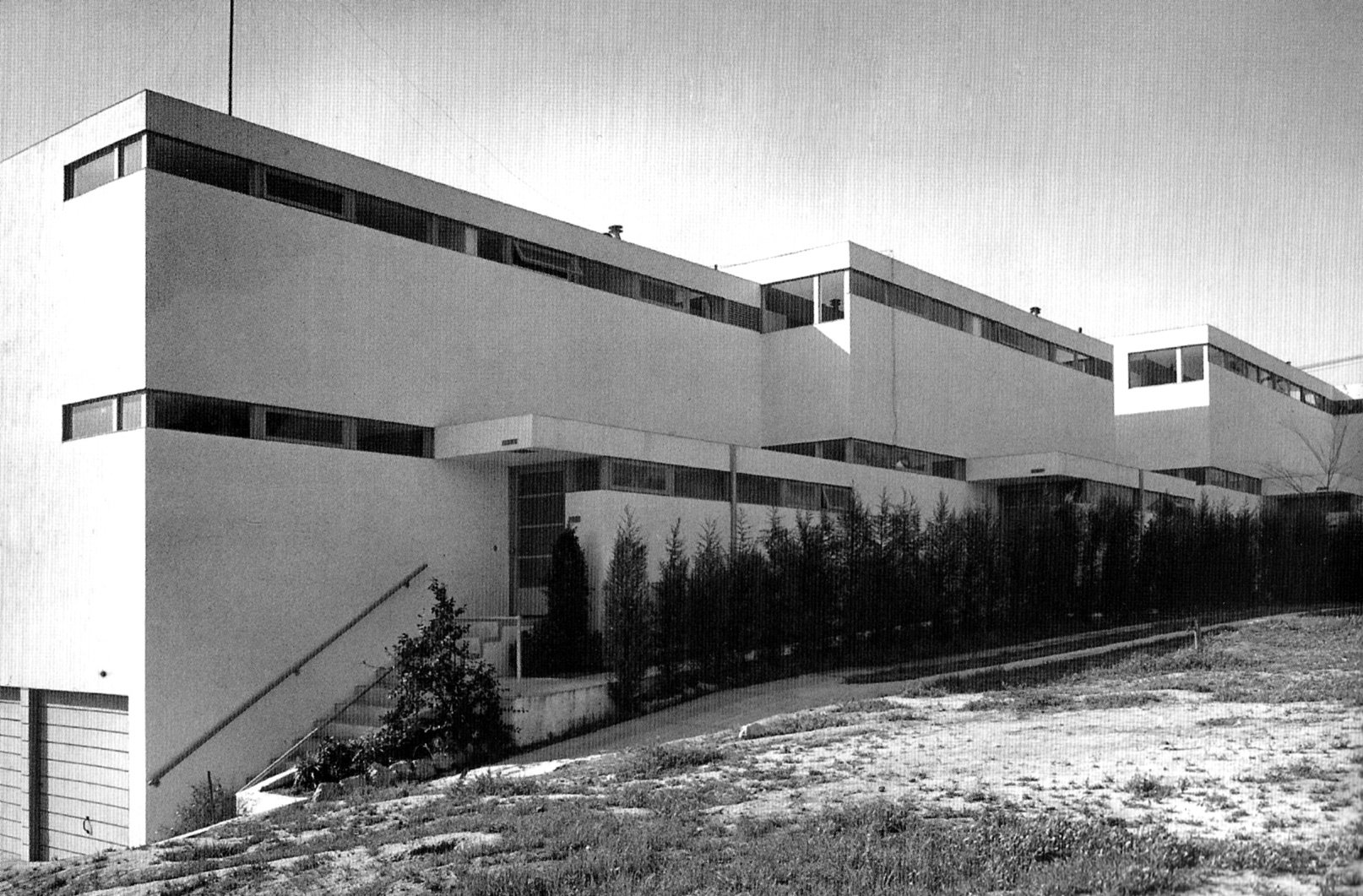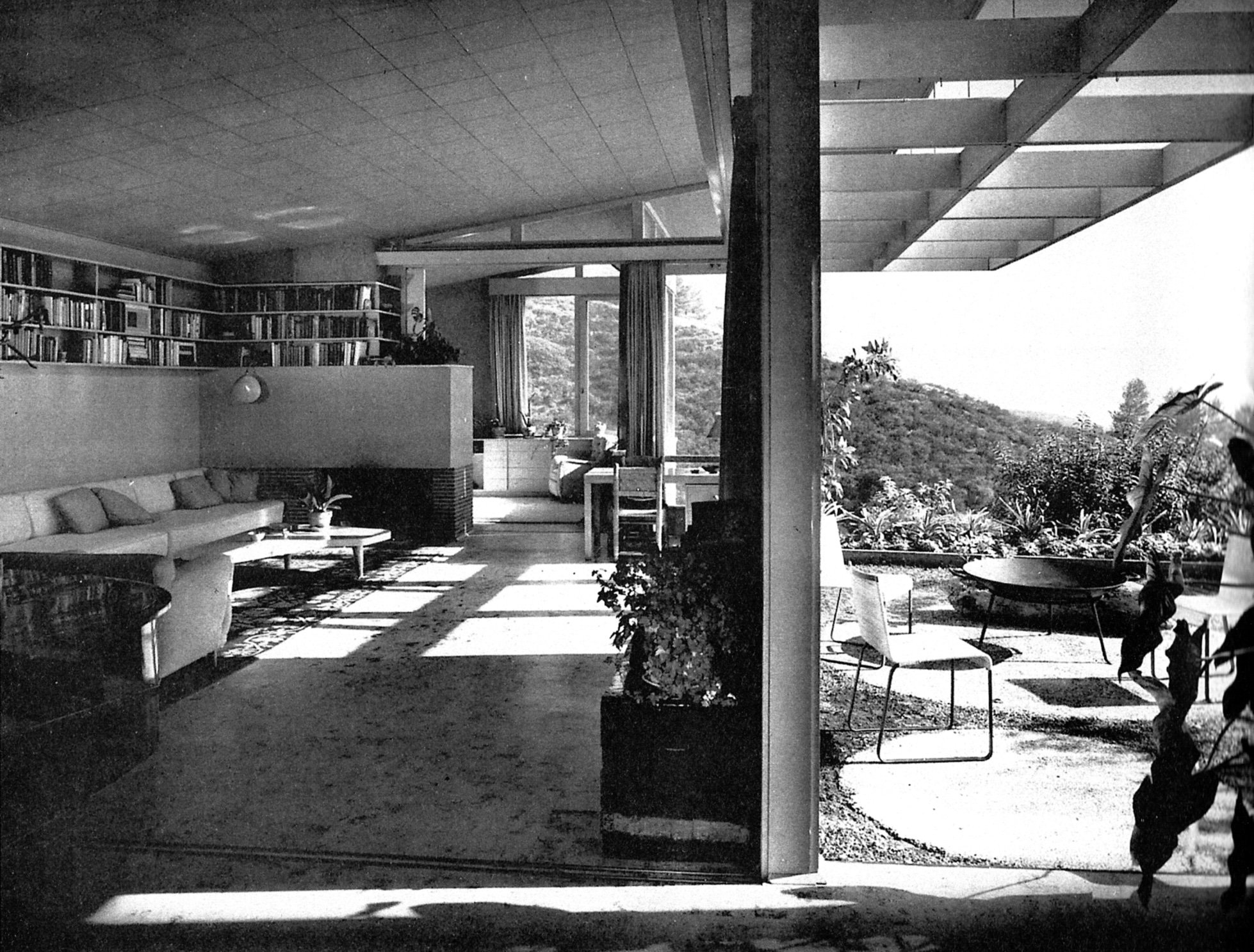Gregory Ain
PHILIP BOYLE on a little known Californian housing architect
First published Summer 2010
California is 7000 miles from Europe and what the locals there call ‘mid Century Modern’ is largely known to us Europeans through our emigrés Neutra and Schindler’s work and the widely published work of the Eames. John Entenza’s Case Study Houses, and the more wacky works of Goff, Frank’s son Lloyd, and Lautner, and Raphael Sorriano. To our somewhat jaded and distant palate it all looks a bit frivolous from this side of the Atlantic and North American land mass. This is unfair and wrong. A case in point is the architect Gregory Ain, indigenous to California (hardly travelled outside his native state) about whom a monograph has been published, unfortunately with almost illegible plans (Gregory Ain, The Modern Home as Social Commentary, Anthony Denzer, Rizzoli, 2008).
I first encountered his work about ten years ago when my son and his girlfriend were house-hunting in Santa Monica and at the end of a long day they drove me up and down two parallel roads within a flat anonymous grid zone behind the then scruffy end of Venice Beach. At first what was striking was the planting. Not just the tall palms but magnificent mature cedars and another species of magnificent tree I did not know, all lining the roads plus smaller shrubs. In between were 50 small (1000sq. feet) single storey freestanding houses externally characterized by flat stucco planes, high clerestory strip windows, flat overhanging roofs. The scale, proportions, interaction of the vertical and horizontal planes were straight out of Reitveld’s best houses, multiplying and varying down both sides of the short street. I later identified this as the Mar Vista Tract Housing (1948) by Ain, Johnson and Day.
Ain was contemporary with Louis Kahn and both were sons of first generation Russian Jewish immigrants born just before and after arriving on the east coast in the early 1900’s. Both their childhoods were marked by the poverty and high expectation of their parents’ immigrant experience and an insistence on cultural standards. Both had long periods when their only work was low cost public housing, and teaching, both had long periods of obscurity. There the similarities end. Their formal training could not have been more different as were their professional preoccupations, theoretical positions, styles, and output. And Kahn is now rightly recognised for his extraordinary achievements.
Ain grew up in Boyle Heights an inner suburb of LA with an interest in maths and carpentry. He dropped out of the local Beaux Art Architectural course and attended lectures by Richard Neutra and Rudolf Schindler, and worked as an assistant for both of them from his late teens. He and his first wife lived/ worked in Neutra’s VDL house in the late 20’s and he assimilated European Modernism from Neutra’s contacts, library, and magazines. He assisted on a number of Neutra’s houses, but became increasingly critical of his boss’ strivings for stylistic purity which often compromised what he considered to be the demands of logical planning. When he set up his own practice his workload came from left wing, bohemian, Communist friends who had gravitated to LA. His own work employed a development of Schindler’s Frame (a rationalising of traditional American timber frame) rather than Neutra’s obsession with steel.
What can be clearly seen in his early houses is an insistence on the logic of the plan and that it should meet the particular requirements of the clients. In this he is the true heir to Louis Sullivan (form follows function) rather than his Austrian mentors. In a series of houses he redefined the relationship between the kitchen and living spaces, sleeping spaces and recreational spaces, children and adult spaces (long before Le Corbusier) - flexible alternative uses in a domestic context. He paid meticulous attention to storage (long before Peter Smithson) and the developing needs of domestic processes responding to the various lifestyles of his clients, and all on the exigencies of cheap difficult LA sites. Neutra was famous for his “tête a tête” sit down with me, list-making client interviews (always recorded in photographs). Ain was often called back to Neutra houses to put them right by the original Neutra clients!
With a fall off in work from the depression through the 39-45 war Ain worked with the Eames, Harry Bertoia and others (as the only qualified architect who had built/made things then) on their development of moulded ply splints, stretchers and gliders for the military. Over this period the means of production grew from a home made steam press to the production of over 150,000 splints of varying shapes. Like others in this time Ain also attempted prefabricated housing to little avail.
He did however manage to build a series of grouped housing schemes for small groups of post war veterans in the late 40s early 50s and it is in these that he refined the lessons and inventions of the pre- war houses by applying them to the generic repetitive needs of grouped housing. For the Mar Vista, Planned Homes, and Altadena schemes he produced house plans for small (1000sq feet) single storey freestanding houses that are models of ease of use and flexibility that continue to function without inhibiting changes in lifestyle that could not have been foreseen at the time of design. Internally while the extensive provision of sliding screens does not live up to a reality where they are permanently static or else removed altogether, this does not diminish the actual flexibility of the ease with which the resultant spaces are useful in undreamt of ways for current use. Externally the variety of ways of placing a standardised plan in relation to its neighbour is exhilarating. The optimum size and proportion of a house plot combined with landscape by Garrett Eckbo which while maturing magnificently also absorbs the flotsom of everybody’s garden and car stuff without intruding on the neighbours.
The question all this raises is that within the modern movement there really is room for the patient, methodical, inspiring, standardised, beautiful small modern house, and not by Margarete Schutte- Lihtsky or Jorn Utzon but in LA.




